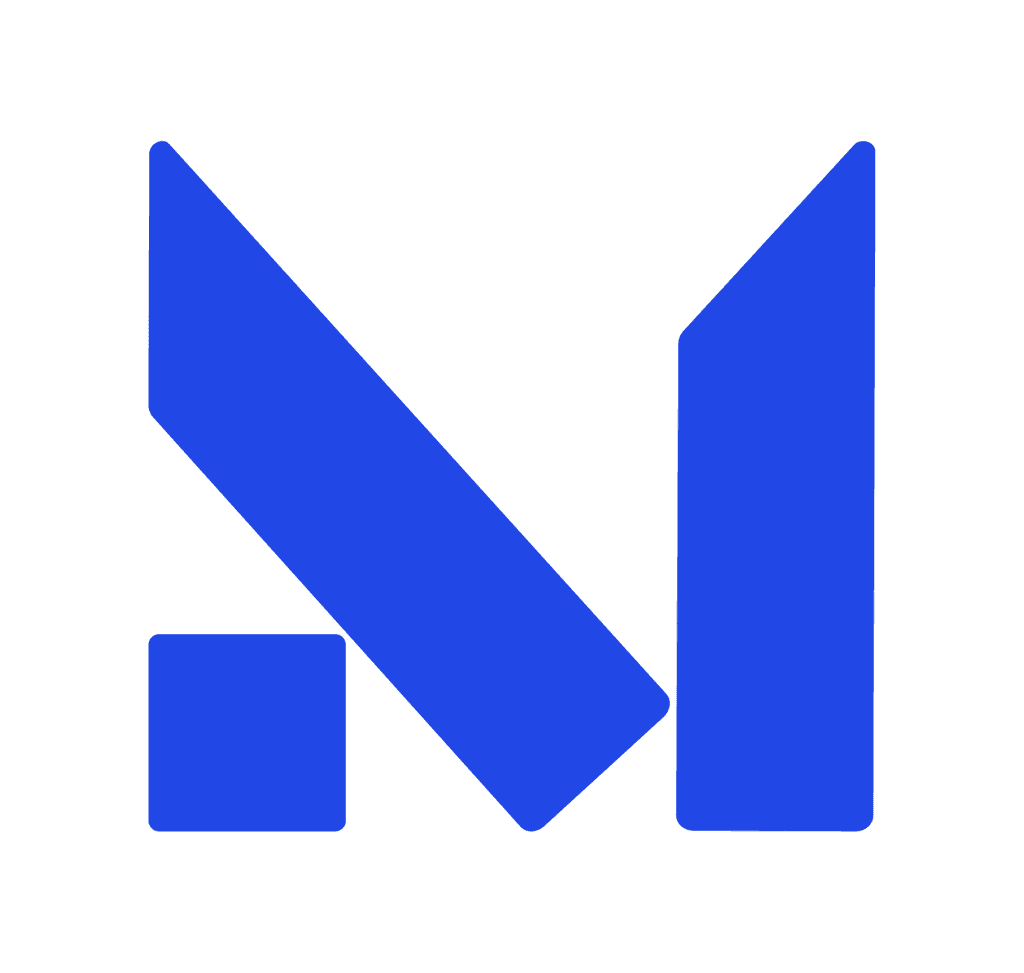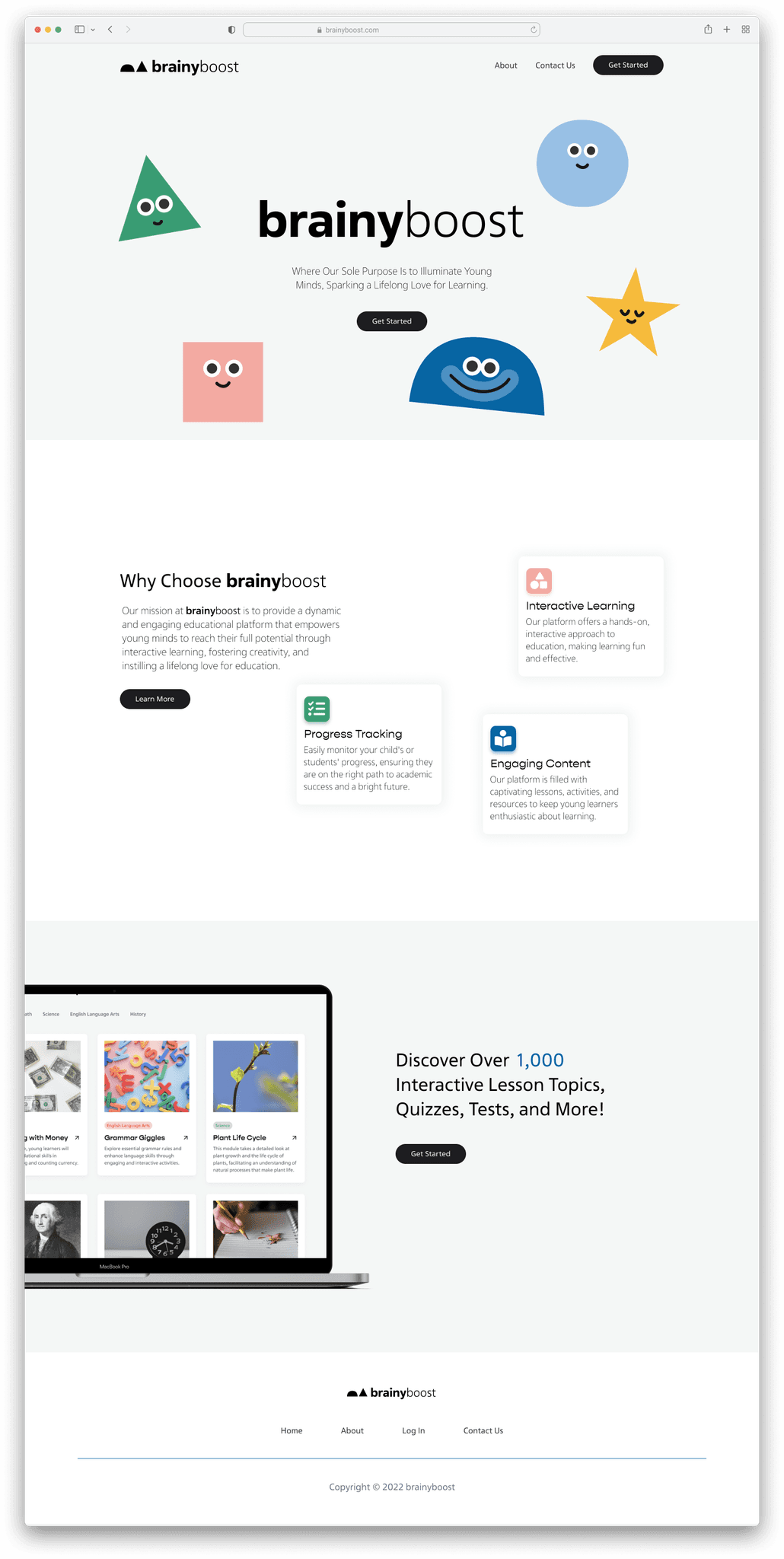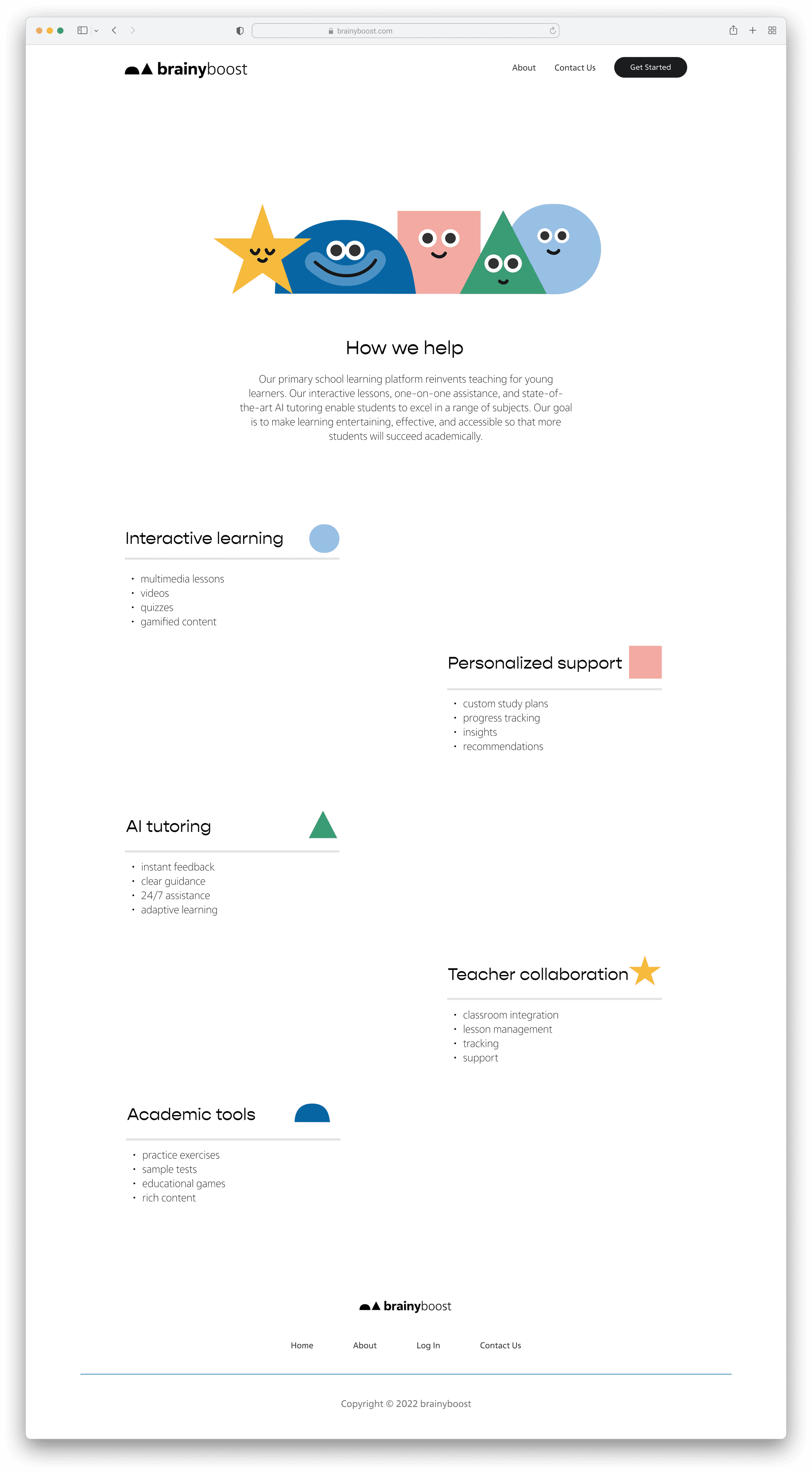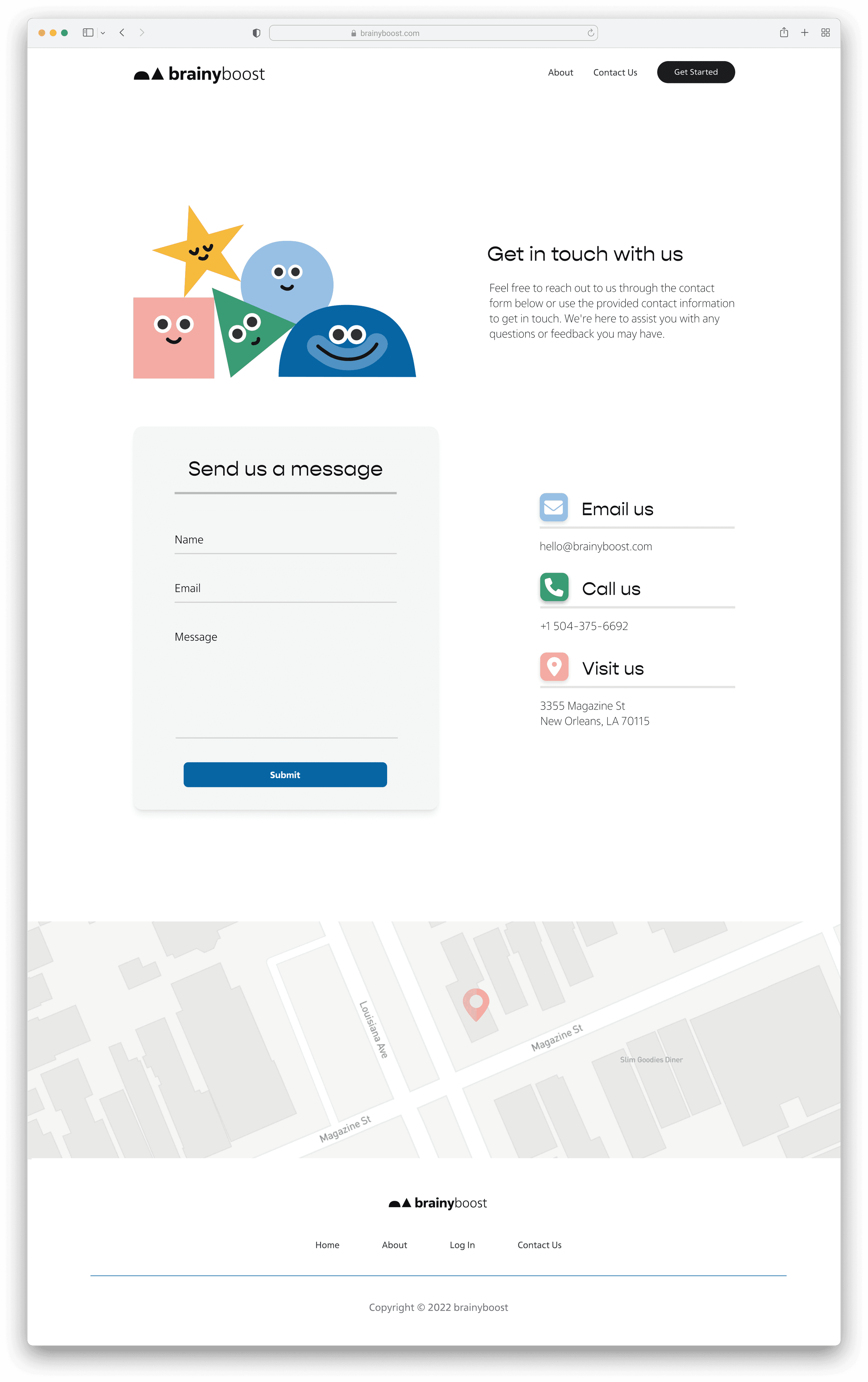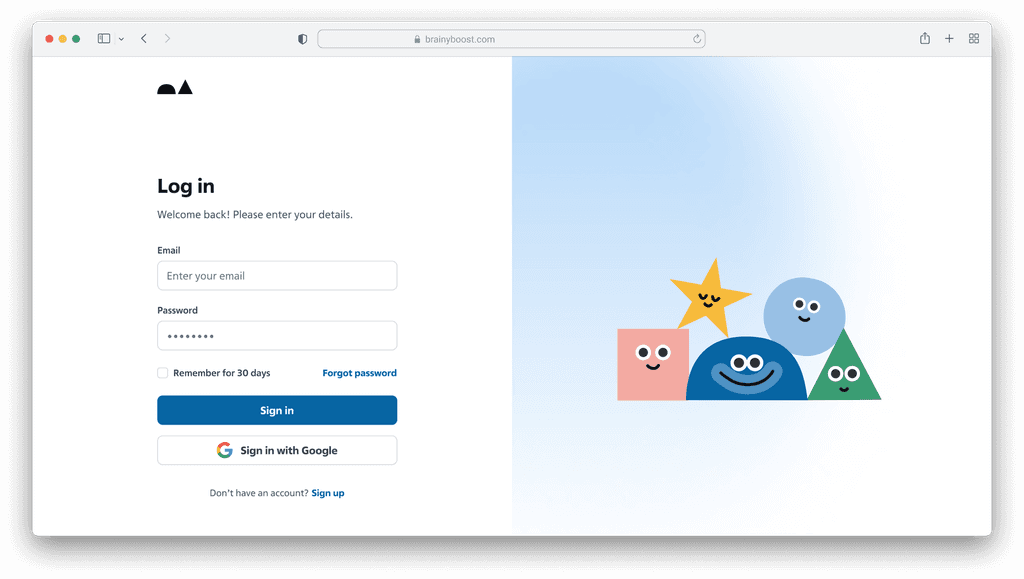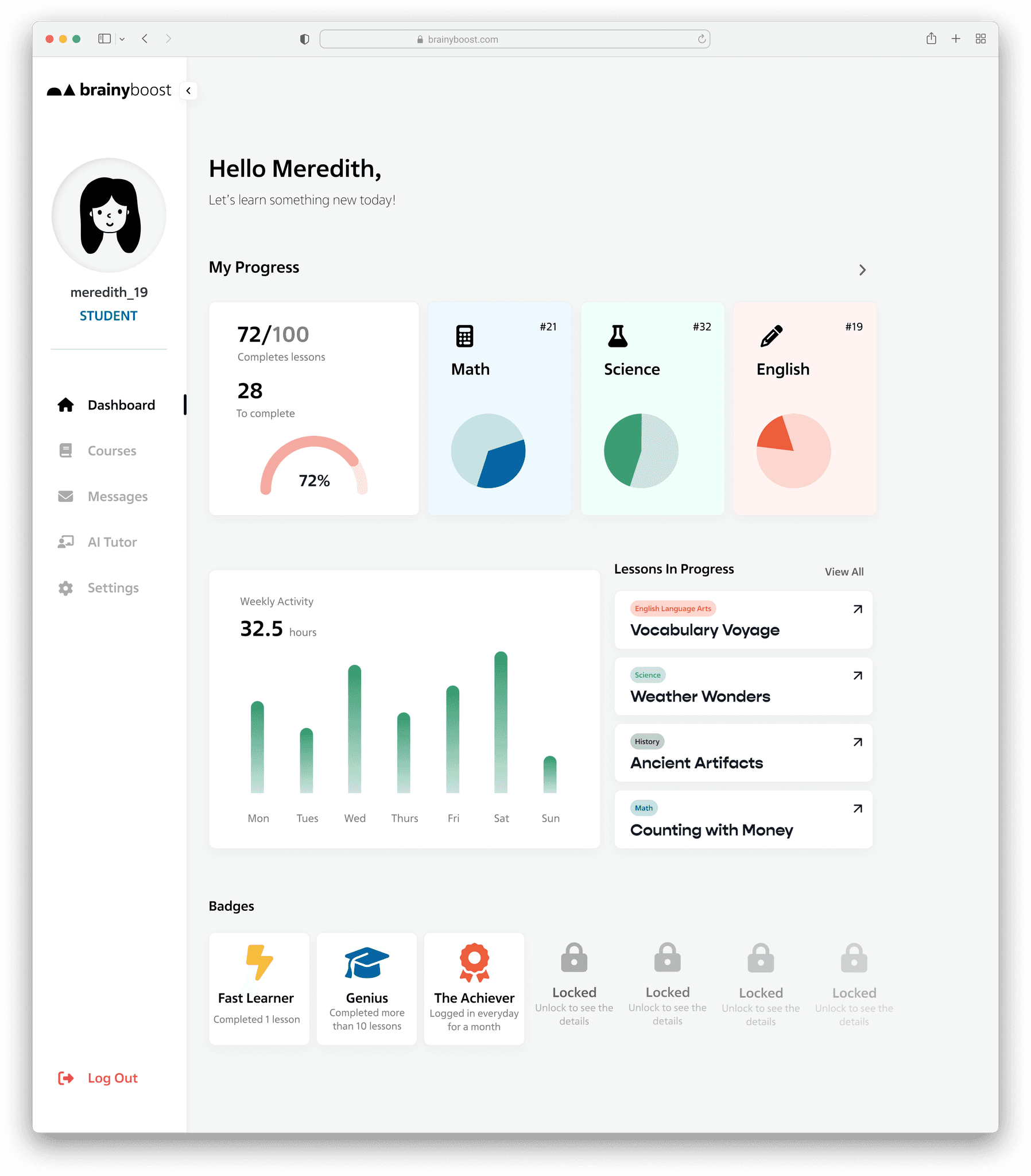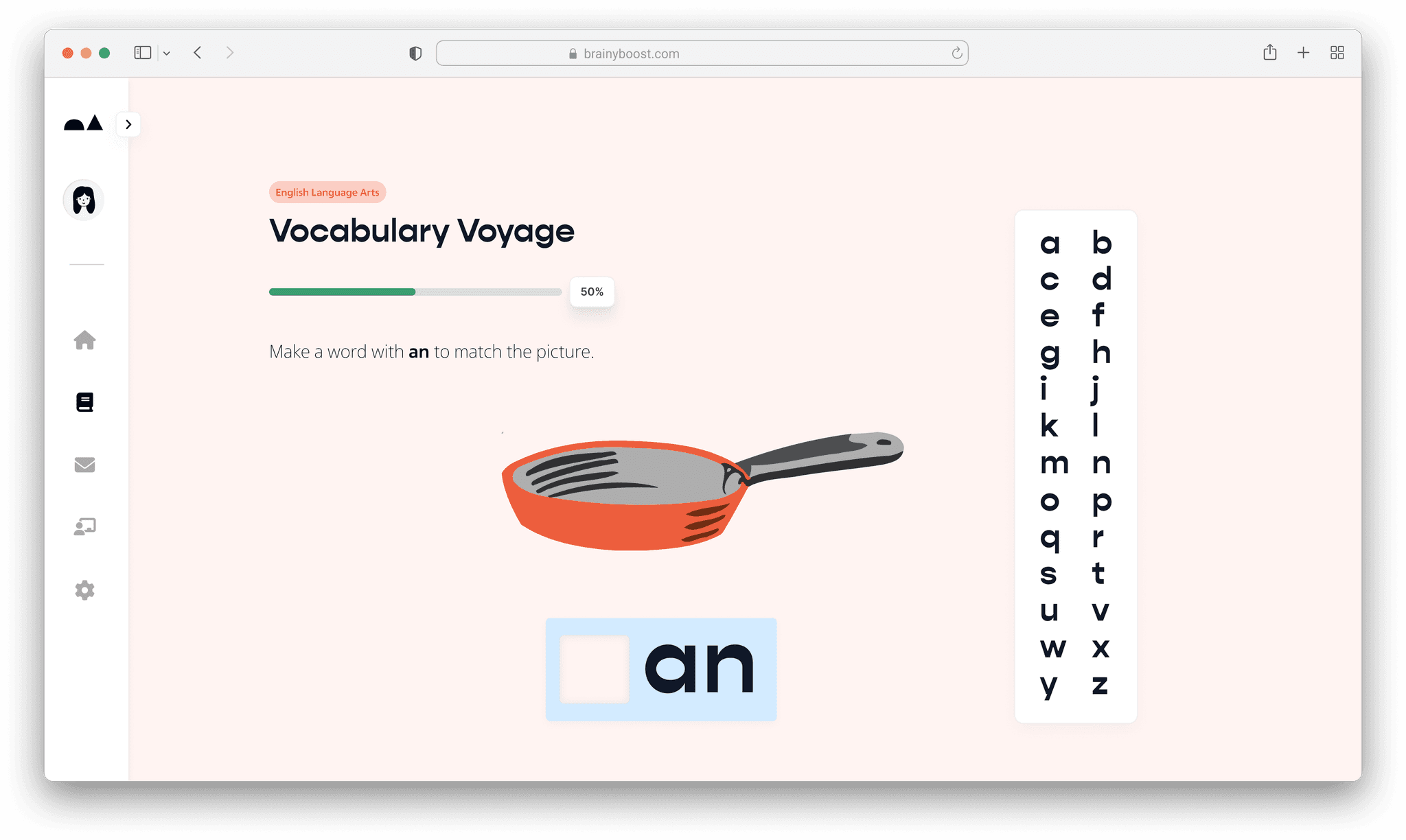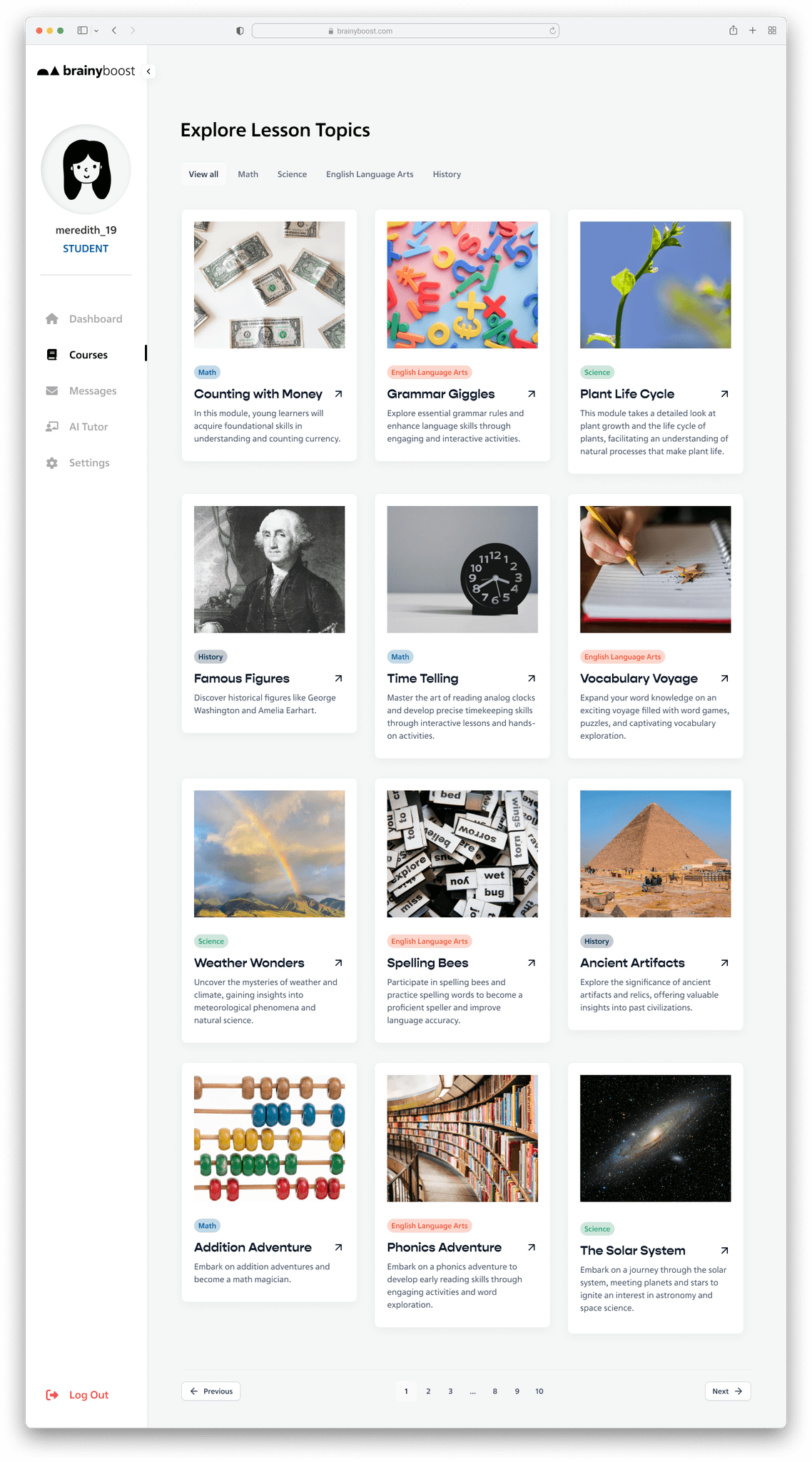UI/UX Designer
Figma
6 weeks
Challenges:
Children often struggle with staying engaged in traditional learning environments.
Parents seek platforms that combine fun with measurable educational outcomes.
Problem Statement:
Young learners often find it hard to stay motivated in traditional education settings. BrainyBoost bridges this gap by offering an interactive, game-based platform where children can explore educational content while tracking their progress in a fun and rewarding way.
Goals:
Create an engaging, kid-friendly interface to encourage learning.
Incorporate gamification features like achievement rewards and progress tracking.
Design a responsive platform that is accessible to children and parents alike.
Ensure usability and safety for young users.
Research:
To understand the needs, pain points, and preferences of young learners and their parents, I conducted:
3 in-depth user interviews with parents, educators, and children in K-12 to explore their experiences with educational tools and platforms. Young family members participated to provide authentic insights into how children interact with these tools.
Card sorting exercises with children to evaluate their preferences for categorizing and navigating educational content.
Affinity mapping to identify common themes, such as the importance of gamification, ease of navigation, and progress tracking.
Key Findings:
Children are highly motivated by interactive and gamified elements, such as rewards, badges, and progress tracking.
Young learners need clear, simple navigation with visual cues, such as icons and bright colors.
Parents value detailed progress tracking and goal-setting tools that allow them to monitor and support their child’s development effectively.
User Persona:
A representation of Brainy Boost's target user:
